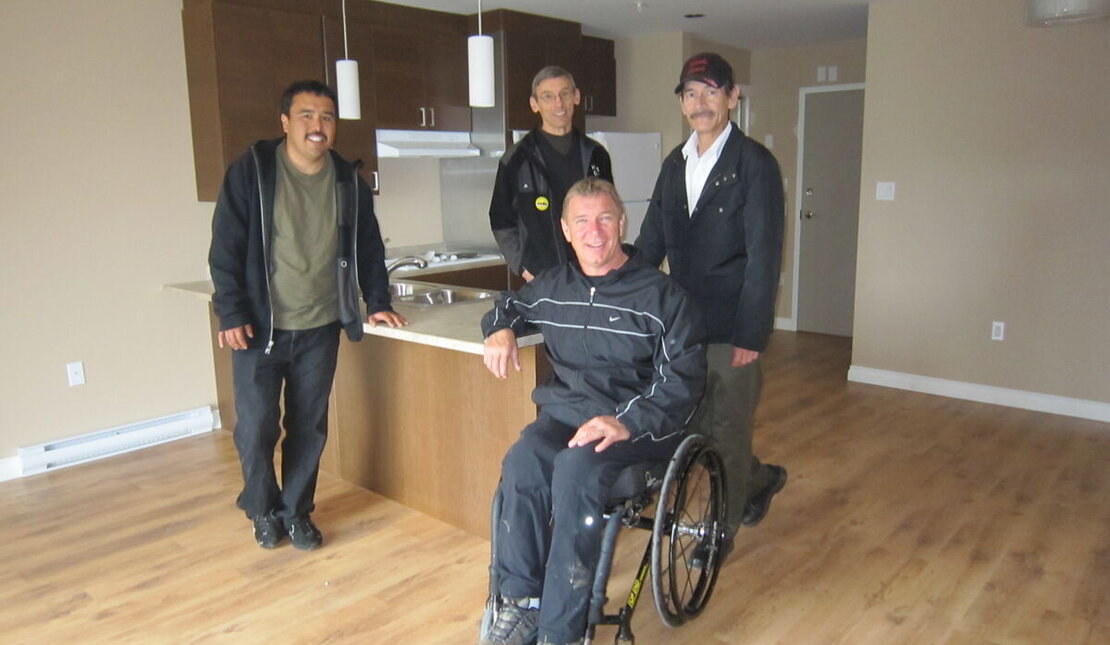3 Ideas to Help Achieve an Accessible Future for Everyone
Canada’s housing shortage has received significant attention from the public and policymakers in recent months. At least 3.5 million new homes are needed to meet surging demand amidst lagging supply. With billions of dollars of investments in new supply coming on board, there’s an understandable rush to get shovels in the ground as quickly as possible.
Yet, if we’re not smart about how these homes are built and don’t ensure that new homes across the country are accessible, we could find ourselves even deeper in a separate but connected and avoidable crisis in the years to come.
A recent survey of Canadian adults confirmed that nearly all respondents wished to age at home and live independently. As the prevalence of disability increases with age, this means living in a place that is equipped with features that facilitate free and comfortable movement. This could mean, for example, wider entryways, walk-in showers, lighting and voice-activated controls, access ramps, or adjustable counters.
Unfortunately, the vast majority of homes in Canada are not built to be accessible or adaptable to accommodate current or future accessibility needs.
It’s a harsh reality that people with disabilities of all ages have lived with for far too long. For example, almost half a million persons with disabilities report being unable to access the aids and assistive devices they need to live independently in their homes. And nearly a million report living in core housing need, that is, in housing that is unsuitable or unaffordable for their circumstances.
With a rapidly aging population and the prevalence of disability rising – jumping from 22% to 27% between 2017 and 2022 – demand for accessible housing is set to grow dramatically in the coming years. How can we ensure the next generation of homes are built with accessibility in mind? Three important ideas stand out.
First, the lack of data on accessible housing need and availability must be urgently remedied. The absence of robust data prevents accurate planning and progress tracking. The shortage of disability data more broadly – which the 2023 AODA review cited as “the single biggest missed opportunity” since the passing of the Act in Ontario in 2005 – is a long-standing issue that should no longer be sidelined.
Fortunately, there have been some positive developments in this area. For example, the Federal Housing Advocate in partnership with Statistics Canada has worked to publish data on the housing experiences of priority groups, including persons with disabilities. And the Urban Land Institute Toronto’s Accelerating Accessibility Coalition (which includes participation from local and national developers), has on its list of priorities a data project to create a baseline for the need and availability of accessible housing. These are important contributions, but a more expansive, government-led effort is required.
Second, innovating through the building code - one of the most powerful tools at our disposal – is key. Without change to this powerful code, provincial/territorial codes will continue to undersupply accessible and adaptable housing options for people.
Existing accessibility requirements in building codes apply to a small percentage of new homes built and by no means make a home accessible. They need to be greatly enhanced. However, an even larger issue is that existing requirements ignore the accessibility of single or semi-detached housing, which make up large swaths of Canadian communities.
In recognition of this gap, CSA Group and Accessibility Standards Canada jointly released the Accessible Dwellings standard in early 2023, which sets out accessible and affordable design requirements for all dwellings, including detached homes. If these measures are incorporated by reference into building codes and made legally enforceable – as recommended by the Federal Housing Advocate – this could have a monumental impact on the supply of accessible housing.
While requiring all homes to be built with accessibility in mind might seem far-fetched to some, Canada would not be the first jurisdiction to do so. This past year, Australia made accessibility mandatory in its national building code, through the introduction of the Livable Housing Design Standard. It requires all new housing to have at least one step-free entry, wider hallways, and an accessible toilet, among other features.
Crucially, there is evidence that making buildings accessible is achievable at little or no additional cost provided it’s done up front. One recent study found that new Multi-Unit Residential Buildings could be certified at the highest tier of the Rick Hansen Foundation Accessibility CertificationTM (RHFAC) program (Gold), with the average increased construction costs compared to National Building Code of just 0.4% for high-rise residential or 1.8% for affordable housing projects.
The multi-unit residential suites at Daniels Mount Pleasant Village in Brampton Ontario is a great example of what can be achieved with proper planning. The Daniels Corporation is working towards Gold certification from RHFAC, and providing accessible suites at no additional cost including features such as power-operated entry doors, roll-in showers and roll-out balconies to name a few.
Finally, governments can stimulate development of more accessible housing through key funding initiatives such as The National Housing Strategy (NHS) and through design initiatives such as the new Housing Design Catalogue. For example, the $27B Apartment Construction Loan Program requires just 10% of constructed units to be accessible, while, the Rapid Housing Initiative, a key affordable housing program, only requires 5%. Increasing these thresholds and embedding accessibility measures into the new catalogue is only logical with the growing need for more accessible housing.
These three steps can help lay the foundation for meeting the growing demand for accessible housing. Ultimately, these changes would help to ensure all Canadians can live in dignity and comfort, regardless of age, income or ability.



